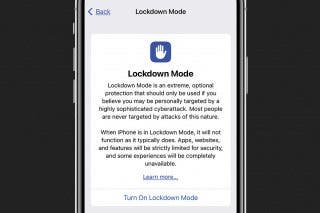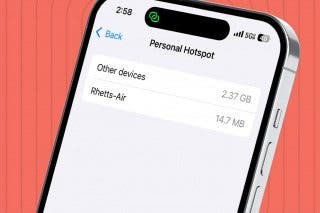10 Siri Voice Commands for iPhone for the Blind & Visually Impaired


Ever since Apple’s virtual assistant Siri debuted with the release of the iPhone 4S and iOS 5 in 2011, using our cell phones has become quicker and easier. So why are you still navigating your device with taps, swipes, and gestures when you could be using Siri? Whether you are a seasoned or rookie iPhone user, Siri will allow you to take control of your device, save time, and be more productive.
Related: How to View Your Recent Siri Conversations on iPhone
As a blind iPhone user, I’ve found the following Siri commands to be helpful in allowing me to take advantage of technology and use my iPhone more easily. However, these tips are appropriate for sighted people, too. These tips have been tested with iOS 12 on the iPhone. If you haven’t already updated your operating system, go ahead and take care of that now. These Siri commands are not to be confused with the new Siri Shortcuts feature and will work for other iOS devices such as an iPad or iPod touch.
1. Getting Started with Siri
Before you can start using your virtual assistant, the first step is to make sure you’ve enabled Siri on your device.
• In the Settings app, tap on Siri & Search. Under the Ask Siri heading, the first option is Listen for Hey Siri—toggle this on to enable hands-free use of your digital assistant. If this is your first time using this feature, you will be prompted to record your voice, so Siri recognizes when you speak.
• Next, toggle on Press Home for Siri for the iPhone 8 and earlier, or Press Side Button for Siri on the iPhone X and later. Finally, toggle on Allow Siri when Locked.
• To use Siri for these tips, you must have a cellular or Wi-Fi connection. Siri will not work without a direct connection to the internet.
• The always-on Hey Siri prompt works for the iPhone 6S and later whether or not it’s plugged in and charging, but the function won’t work if your iPhone is face down or if your case cover is closed.

2. Opening Apps with Siri
You can open any iOS app using Siri. This is a good trick for opening apps that are installed on your device but hidden out of view in an unknown folder. To do this, simply activate Siri and use the command, “Open,” followed by the app name. While you can open apps with Siri, you still have to physically close them by clicking the Home button on the iPhone 8 and earlier or by swiping up on the iPhone X and later.

3. Controlling Settings with Siri
You can toggle on or off basic settings using Siri. To do this, activate Siri and use the command, “Turn on,” or “Turn off” followed by the name of the option. Some options you can control with Siri include your flashlight, Airplane Mode, Bluetooth, Cellular Data, Do Not Disturb, and Wi-Fi. Siri will stop working once Airplane Mode is turned on, so Airplane Mode must be manually turned off.

4. Setting Alarms in the Clock App with Siri
You can use Siri to set, change, or delete alarms in the Clock app. To do this, activate Siri and do either of the following:
• To set a new alarm, use the command, “Set alarm to,” followed by the desired time. You can set additional alarms with this same command.
• To change a previously set alarm, assuming you only have one set, use the command, “Change alarm to,” followed by the desired new time (this will not set a new alarm, but will replace the existing one).
• If you have multiple alarms, use the command, “Change [insert hour of previously set time] alarm to,” followed by the new time.
• To delete a previously set alarm, use the command, “Delete _____ alarm” with the time of the alarm you want deleted.
• To turn on an alarm, if you have only one saved, simply use the command, “Turn on alarm.” If you have multiple alarms set, use the command, “Turn on [insert hour of previously set time] alarm.”
• If you only have one alarm saved and it’s currently activated, you can turn it off at any time by using the command, “Turn alarm off.”
• If you have multiple alarms activated, to turn one off, use the command “Turn off _____ alarm” indicating the specific time of the alarm you want to turn off.

5. Setting Appointments in the Calendar App with Siri
You can set appointments in the Calendar app using Siri by activating your assistant and using the command, “Set appointment for,” followed by a description along with the exact calendar date and the time of the appointment. You do not have to indicate the year unless it is not in the same calendar year.
• After you dictate your appointment, Siri will ask if you’re “Ready to schedule it?” Confirm by saying, “Yes.”
• Siri may confirm the appointment by repeating it to you and saying, “Let me know if you want to make any changes,” which you can accept by saying nothing or revise by saying “Change it.”
• To delete an appointment, use the command, “Delete appointment” followed by the appointment name; Siri will ask for confirmation, and you can say “Yes” to delete the appointment or “Cancel” to leave it as is.

6. Setting Reminders with Siri
Another way your digital assistant can make your life easier is with the Reminders app. To set a task, activate Siri and use the command, “Set reminder to “ followed by the task name, day, and time desired.
• To set a reminder that recurs every day, week, month, or year, use the command, “Set a daily reminder” followed by the task you want to be reminded of.
• To delete an item, use the command, “Delete reminder to” followed by the item; the phrase does not need to be exact for Siri to recognize it, but does need matching keywords.

7. Spelling & Defining Words with the Built-in Siri Dictionary
Need to know a definition or how to spell a word? Siri can do that for you with its handy built-in dictionary; you can even ask for synonyms and antonyms! For example, you can ask, “How do you spell the word mischievous?” If you’d like the definition of a word, you can say, for example, “Define the word gigabyte.”

8. Sending Messages with Siri
It’s convenient to dictate and send texts or iMessages with Siri.
• To do this, use the command “Text “ or “Send message” followed by the name of the desired contact.
• Siri will respond, “What do you want to say?”
• Dictate your message; Siri will confirm the name of the contact and your message.
• Next Siri will ask, “Ready to send it?”
• You can approve by saying“Yes,” “OK,” or “Sure;” Siri will then confirm and send your message on its way.
• If the message contains mistakes, command Siri to“Change it,” which will allow you to edit your message.
• If you are not ready to send your message, say “No,” or you can say “Cancel” to delete the whole action.

9. Crunching Numbers in the Calculator App with Siri
You can add, subtract, multiply, and divide numbers with Siri in the Calculator app. Siri can also perform a combination of operations. For example, you can ask, “What is four times four divided by two?” and Siri will offer the correct answer of eight.

10. Making Calls on the Phone App with Siri
Instead of digging through your contacts, use Siri to make your phone calls for you.
• To make a phone call, use the command “Call,” followed by the contact name. If you only have one phone number listed for a specified contact, Siri will automatically call that number.
• If you have multiple numbers available for a contact, Siri will present you with choices; select the number by saying the label such as home, work, or mobile. You can also have Siri call a business that is not in your Contacts.
• When Siri presents you with a choice, simply say “Yes” to place the call or “No” to move on to the next number.![]()
This article was originally published in the Spring 2019 issue of iPhone Life magazine.

Joe Leo
Joe Leo has been writing about Apple and technology since 2006. As a contributor to iPhone Life, he primarily writes content geared toward the visually impaired iPhone user (being totally blind himself after losing his eyesight in July 2013 from health complications). He also writes for the website MacPrices and has previously written for the site Low End Mac.



 Rachel Needell
Rachel Needell
 Rhett Intriago
Rhett Intriago
 Olena Kagui
Olena Kagui

 Amy Spitzfaden Both
Amy Spitzfaden Both
 Leanne Hays
Leanne Hays




 August Garry
August Garry



 Nicholas Naioti
Nicholas Naioti